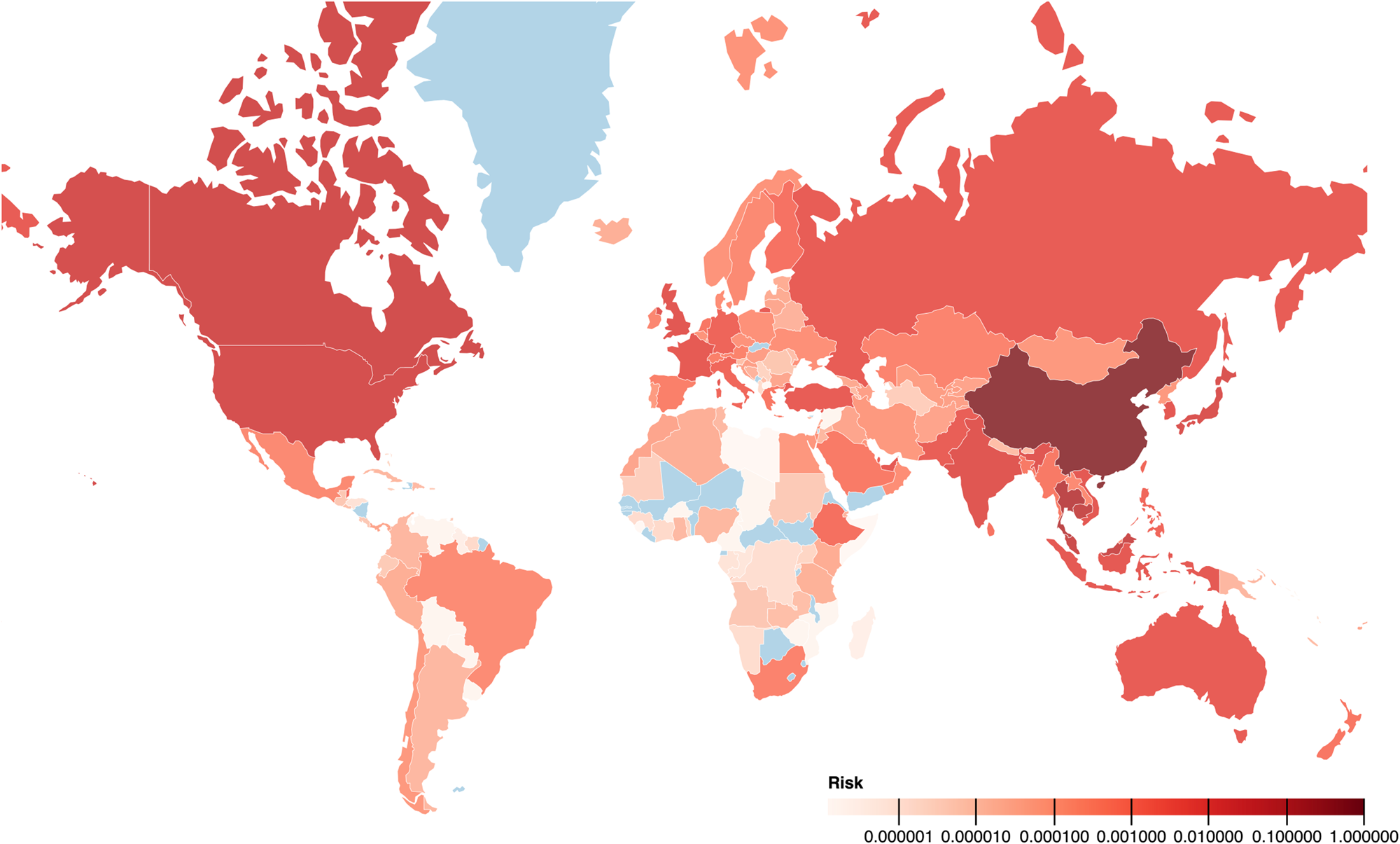Understanding the risk of international transmission of a newly emerging pathogen.
Using international flight data we categorised countries by their risk of direct importation of the novel coronavirus while the epidemic was still limited to Wuhan, China [@haider_passengers_2020]. The limited direct travel links between this region of China and Southern America and sub-Saharan Africa produced a relatively low risk of rapid import into these regions. This approach did not take into account establishment in a third country and onward transmission from there along more established travel routes.
This work was done as part of support to the Africa CDC from the PANDORA-ID-NET to understand the risk from the newly emerging virus, highlighting that several African countries were likely to observe imported infection earlier than others (i.e. Ethiopia, South Africa).

This coincided with some work to highlight the current preparedness on the African continent following prior outbreaks of epidemic diseases [@kapata_is_2020].